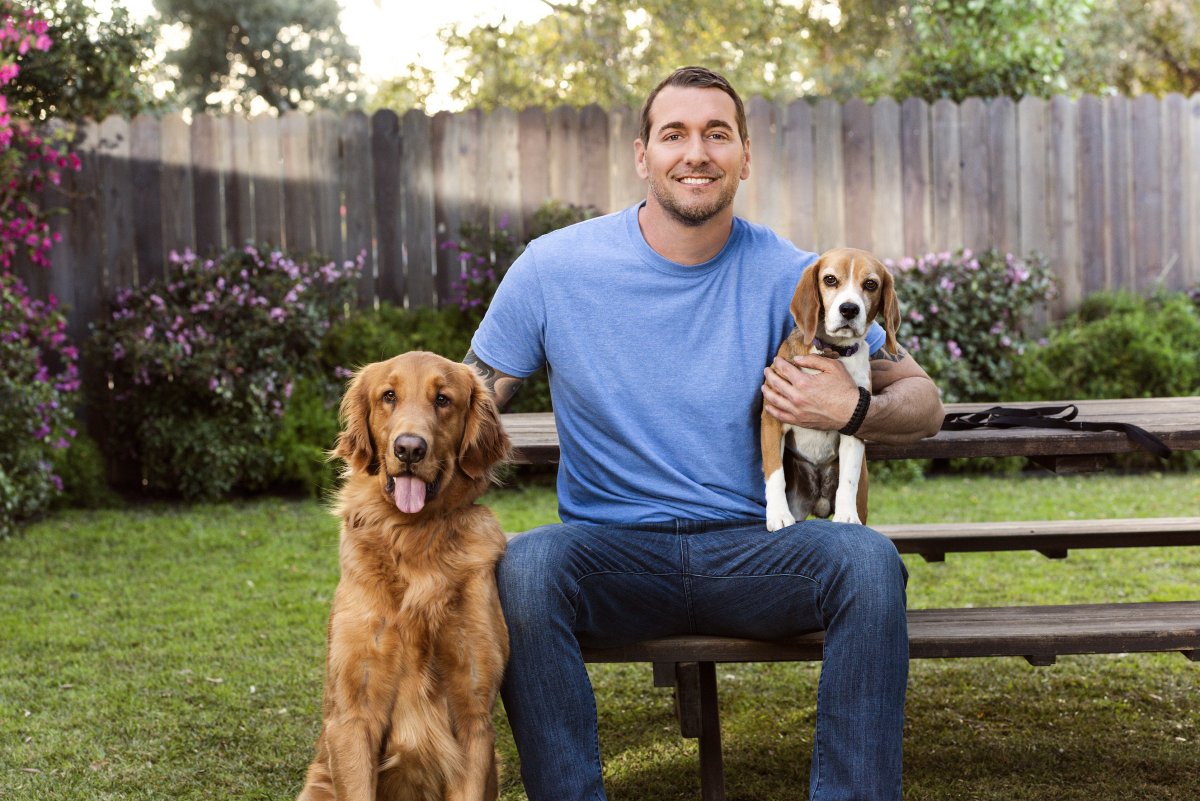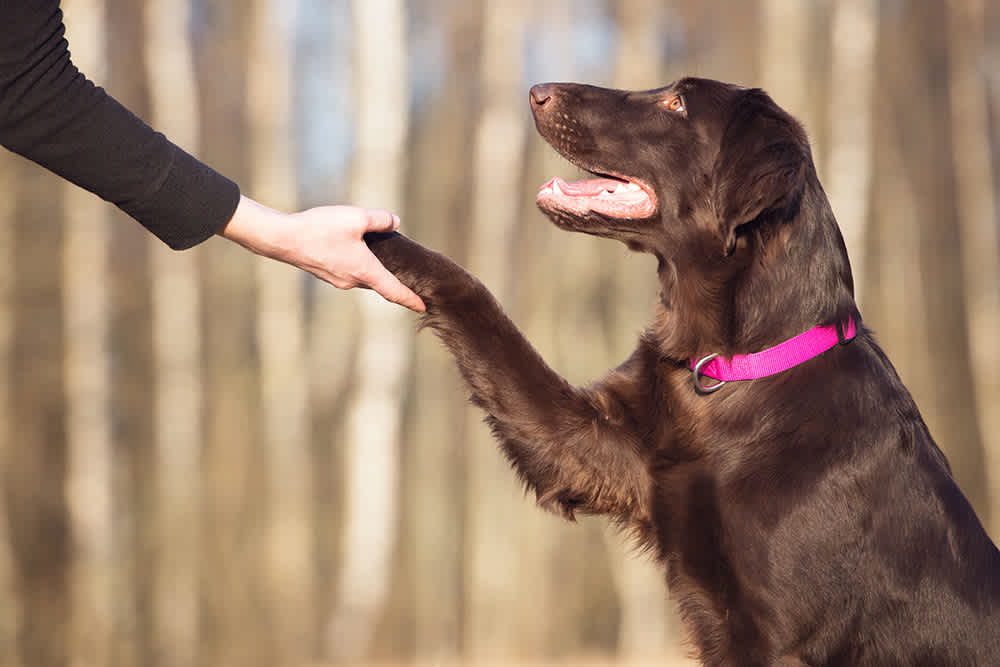Newbie's Guide to Effective Canine Training at Home
Efficiently educating a canine at home calls for a nuanced understanding of canine habits and efficient communication approaches. Developing clear training objectives, making use of high-quality rewards, and maintaining uniformity across household members are essential components. Incorporating training into daily routines can improve both involvement and retention.
Understanding Pet Dog Behavior
Understanding pet behavior is vital for efficient training and fostering an unified connection in between people and their canine companions - Puppy Training. Pet dogs interact mainly via body language, articulations, and facial expressions, making it critical for owners to interpret these signals properly. Recognizing habits such as tail wagging, roaring, or cring can give understandings into a dog's mood and purposes
Furthermore, recognizing the natural impulses of canines, such as their pack mentality, assists owners develop management duties within the home. This is essential for producing an organized environment where pet dogs really feel protected and are more receptive to training. Pets are also influenced by their socialization experiences; very early direct exposure to different environments, people, and other pets can significantly shape their habits later on in life.
Usual behavioral issues, such as aggression, anxiousness, or extreme barking, often come from misunderstandings or unmet demands. Observing and addressing these issues promptly can avoid acceleration and make sure a positive training experience. By fostering a deep understanding of pet actions, proprietors can customize their training techniques to fit their canine friends, eventually resulting in a contented and mannerly family pet.

Crucial Educating Tools
A fully equipped training space can considerably improve the performance of dog training at home. Important training devices make sure that both the trainer and the dog can take part in efficient sessions that cultivate discovering and bonding.

Purchasing a strong chain and a comfortable, well-fitting collar or harness is important for safety and control. These tools aid establish borders and ensure the pet continues to be secure throughout training. Additionally, an assigned training area, free from interruptions, help concentration for both the dog and the instructor.
Training help such as training pads, cones, or agility devices can additionally improve the experience by introducing range and difficulties. Having a note pad or digital application for tracking development can be invaluable, enabling you to note successes and locations for enhancement. Using these essential tools will certainly produce a positive training atmosphere and lay the foundation for reliable learning.
Developing an Educating Regimen
Establishing a regular training routine is necessary for effective pet dog training in the house. A well-structured routine not just aids in enhancing preferred behaviors however likewise supplies your canine with a sense of protection and predictability. To develop a reliable training routine, start by identifying certain training objectives, such as standard commands, leash walking, or house-training.
Pick a marked time each day for training sessions, ideally when your dog is responsive and alert. Sessions ought to be short, around 5 to 15 mins, to maintain emphasis and stop tiredness. Uniformity in timing and atmosphere will certainly boost your canine's understanding experience.
Incorporate training into everyday tasks to enhance skills. Technique commands during walks or mealtime, which integrates learning into natural routines. Furthermore, stay adaptable and readjust the regular as essential, accommodating your pet dog's power levels and mood.
Positive Reinforcement Methods

When implementing favorable reinforcement, additional hints it is essential to select rewards click for info that are encouraging for your pet dog. High-value deals with, such as small items of chicken or cheese, can be specifically efficient during training sessions. Furthermore, differing the rewards can keep your canine's passion and enthusiasm.
Begin with simple commands, like "rest" or "remain," and slowly development to more complicated jobs. Consistency is essential; ensure that all relative use the exact same commands and incentive systems to avoid complication.
Additionally, it is essential to stay patient and stay clear of frustration. Pets, like people, find out at their very own rate. By promoting a supportive training environment through positive support, you can enhance your canine's knowing experience while reinforcing the bond in between you and your hairy buddy, laying the foundation for effective training results.
Usual Educating Obstacles
While training a pet in the house can be a rewarding experience, it usually comes with a set of usual challenges that can test both patience and consistency. One prevalent issue is diversion. Dogs might become quickly sidetracked by noises, movements, and even fragrances in their setting, making it tough to preserve their focus throughout training sessions.
An additional obstacle is incongruity in commands and support. It can puzzle the canine and impede progress if family members use different cues or benefits. Developing a unified strategy is crucial for effective communication.
Furthermore, pets can experience aggravation or tension, especially if they do not recognize what is anticipated of them. This can lead to unwanted actions, such as barking or eating.
Finally, the timing of reinforcement is essential. Postponed benefits can decrease the performance of positive support, as canines might fail to attach the behavior with the benefit.
Getting rid of these challenges calls for commitment, clear interaction, and a structured training plan - Puppy Training. Recognizing and dealing with these common challenges will certainly lead the means for a more satisfying and successful training experience in your home
Conclusion
In conclusion, successful canine training at home demands a comprehensive best site understanding of canine actions and reliable communication strategies. By developing clear training goals and utilizing high-grade deals with together with favorable support, the training process comes to be much more gratifying for both the fitness instructor and the dog.
Developing a consistent training regimen is vital for effective pet dog training at home.Positive support strategies are essential to effective pet training, promoting desired actions with benefits rather than penalty. By promoting a supportive training setting through favorable reinforcement, you can improve your dog's discovering experience while strengthening the bond between you and your hairy companion, laying the foundation for effective training results.
In final thought, successful pet training at home requires a thorough understanding of canine behavior and efficient interaction techniques. By developing clear training objectives and utilizing top notch deals with alongside positive support, the training process ends up being much more fulfilling for both the dog and the trainer.